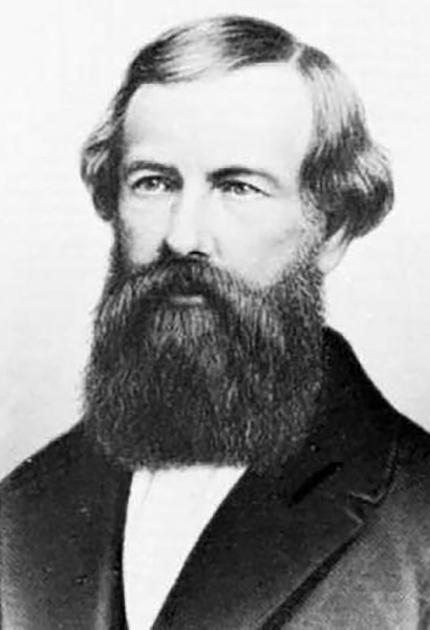
Elevators, those ubiquitous vertical transport systems, are so ingrained in our modern lives that we rarely stop to consider their origins. Who Created The Elevator? The answer, like the elevator’s journey itself, is a multi-layered story of ingenuity and innovation spanning centuries. While no single individual can claim sole credit for “who created the elevator,” the evolution of these machines is a fascinating testament to human creativity.
Early forms of lifting platforms, powered by humans, animals, or water wheels, existed in ancient civilizations. The Romans, for example, used hoisting systems to lift heavy materials for construction projects. These rudimentary devices, while functional, were a far cry from the sophisticated elevators we know today. The true ancestor of the modern elevator began to take shape during the Industrial Revolution, driven by the need to transport heavy goods and materials in factories and mines.
The 19th century witnessed significant advancements in elevator technology. In 1823, Burton and Homer, two architects in London, introduced the “ascending room,” a steam-powered platform designed to transport tourists to a viewing platform. While primarily a novelty, this marked a crucial step towards passenger elevators. Then, in 1852, Elisha Otis revolutionized elevator safety with his invention of the safety brake. This groundbreaking device prevented the elevator car from plummeting to the ground if the hoisting rope broke, paving the way for taller buildings and widespread elevator adoption. Otis showcased his invention dramatically at the 1854 World’s Fair in New York, dramatically cutting the supporting rope of the platform he was standing on to demonstrate its safety. This public display of confidence instantly cemented his name in elevator history.
 Elisha Otis Demonstrates Elevator Safety Brake
Elisha Otis Demonstrates Elevator Safety Brake
Following Otis’s breakthrough, the elevator rapidly transformed urban landscapes. The first passenger elevator was installed in a five-story New York department store, E.V. Haughwout & Co., in 1857. This marked the beginning of the elevator’s integration into daily life. As buildings soared higher, so too did the demand for safe and efficient vertical transportation. Hydraulic elevators, powered by water pressure, became popular in the latter half of the 19th century, further advancing the technology.
The development of electric elevators at the turn of the 20th century, championed by inventors like Werner von Siemens, ushered in the modern era of elevator technology. Electric elevators offered greater speed, efficiency, and control compared to their hydraulic counterparts. These innovations enabled the construction of skyscrapers, fundamentally reshaping city skylines and urban living.
 Early Electric Elevator Design Schematic
Early Electric Elevator Design Schematic
The Legacy of Elevator Innovation
While Elisha Otis is often credited with inventing the elevator, it’s more accurate to say he invented the modern safety elevator, a crucial distinction. The elevator’s story is one of continuous improvement and collaboration, with numerous individuals contributing to its development over time. From ancient hoisting systems to cutting-edge designs incorporating computer controls and regenerative braking, the elevator’s evolution reflects human ingenuity and our persistent pursuit of efficient vertical movement.
“The safety elevator wasn’t just a mechanical innovation; it was a social and architectural revolution,” says Dr. Emily Carter, a historian specializing in 19th-century technology. “It made the modern skyscraper possible, transforming our cities and how we live in them.”
 Modern Skyscraper Elevator System
Modern Skyscraper Elevator System
The Future of Vertical Transportation
Today, elevator technology continues to evolve. Destination dispatch systems, energy-efficient designs, and improved safety features are constantly being developed. The future of elevators may include magnetic levitation technology, vacuum tube transport systems, and even robotic elevator systems integrated with smart building technology.
“The next generation of elevators will be even smarter, faster, and more sustainable,” explains Dr. James Lee, an elevator engineer. “We’re exploring new materials, control systems, and energy-efficient technologies to further optimize vertical transportation.”
Conclusion
So, who created the elevator? The answer isn’t a single name, but a collective effort spanning centuries. From ancient hoisting platforms to the modern marvels of engineering we use daily, the elevator’s story is a testament to human innovation and our constant drive to reach new heights.
FAQ
- What is the significance of Elisha Otis’s invention? Elisha Otis’s safety brake made elevators safe for passenger use, leading to the widespread adoption of elevators and the construction of taller buildings.
- When was the first passenger elevator installed? The first passenger elevator was installed in 1857 in a New York department store.
- What are some modern advancements in elevator technology? Modern advancements include destination dispatch systems, energy-efficient designs, and improved safety features.
- What is the future of elevator technology? The future may include magnetic levitation, vacuum tube transport, and robotic elevator systems.
- Why are elevators important? Elevators are crucial for efficient vertical transportation in buildings, making high-rise living and working possible.
- What were early elevators powered by? Early elevators were powered by humans, animals, water wheels, steam, and later, hydraulics.
- Who invented the electric elevator? Werner von Siemens played a key role in developing the electric elevator.